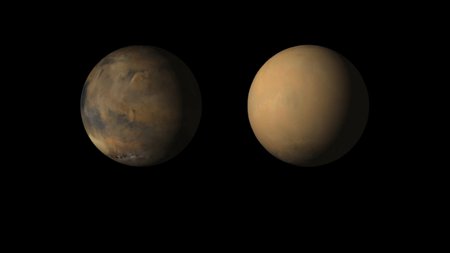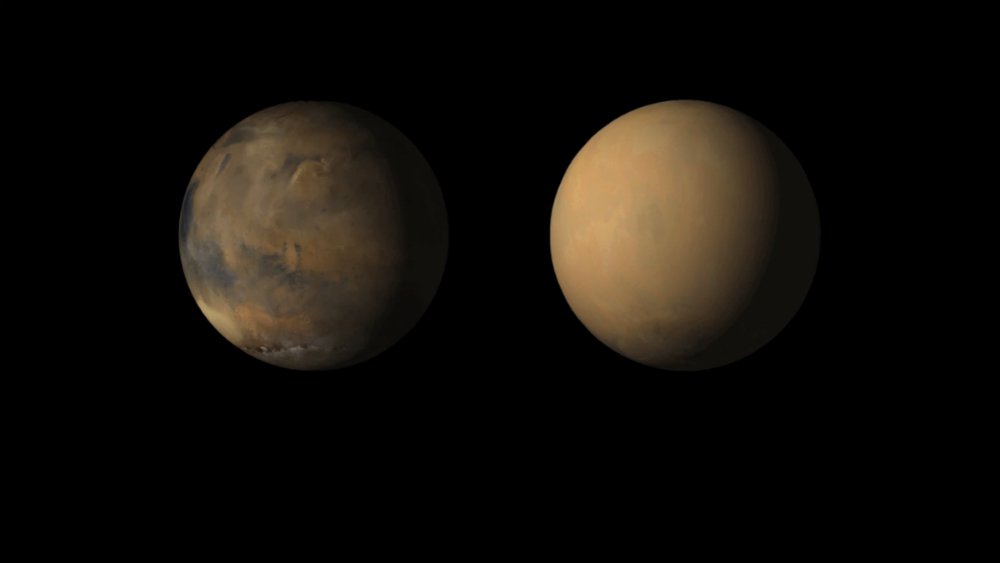Storm chasing takes luck and patience on Earth—and even more so on Mars.
For scientists watching the Red Planet from data gathered by NASA's orbiters, the past month has been a windfall. "Global" dust storms, where a runaway series of storms creates a dust cloud so large it envelops the planet, only appear every six to eight years (that's three to four Mars years). Scientists still don't understand why or how exactly these storms form and evolve.
In June, one of these dust events rapidly engulfed the planet. Scientists first observed a smaller-scale dust storm on May 30. By June 20, it had gone global.
For the Opportunity rover, that meant a sudden drop in visibility from a clear, sunny day to that of an overcast one. Because Opportunity runs on solar energy, scientists had to suspend science activities to preserve the rover's batteries. As of July 18th, no response has been received from the rover.
Luckily, all that dust acts as an atmospheric insulator, keeping nighttime temperatures from dropping down to lower than what Opportunity can handle. But the nearly 15-year-old rover isn't out of the woods yet: it could take weeks, or even months, for the dust to start settling. Based on the longevity of a 2001 global storm, NASA scientists estimate it may be early September before the haze has cleared enough for Opportunity to power up and call home.
 Side-by-side images show how dust has enveloped the Red Planet, courtesy of the Mars Color Imager (MARCI) wide-angle camera onboard NASA's Mars Reconnaissance Orbiter (MRO). The image on the left was taken on May 28, while the one on the right was taken on July 1.
Credit: NASA/JPL-Caltech/MSSS
Side-by-side images show how dust has enveloped the Red Planet, courtesy of the Mars Color Imager (MARCI) wide-angle camera onboard NASA's Mars Reconnaissance Orbiter (MRO). The image on the left was taken on May 28, while the one on the right was taken on July 1.
Credit: NASA/JPL-Caltech/MSSS

